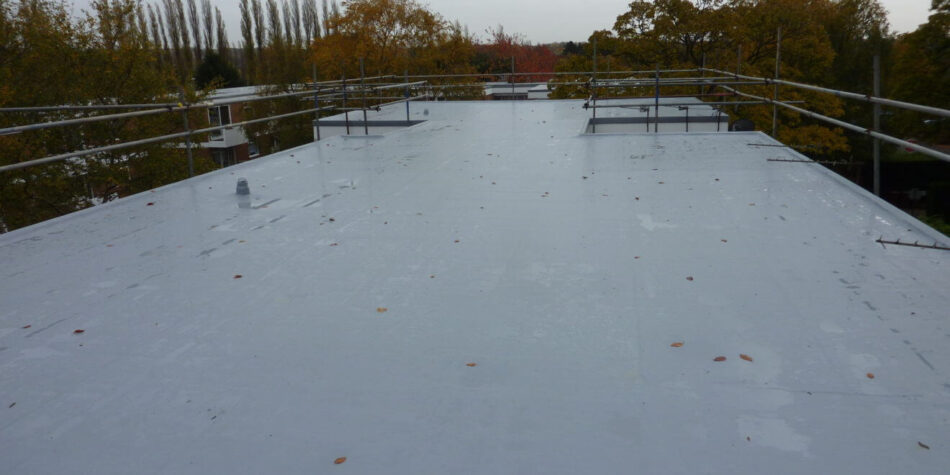When considering the structure and longevity of any roofing system, two common questions often arise: how many layers should a roof have? and does Fibreglass Roofing in Birmingham need supplementary protection? Both are crucial in determining the durability, performance, and cost-efficiency of your roof.
Understanding Roof Layers: What’s Typical?
A traditional roofing system, whether flat or pitched, consists of several layers that serve specific purposes. These include:
Roof Deck (Base Layer)
This base layer serves as the structural support for all other roofing components and is typically constructed from materials such as plywood or oriented strand board (OSB) in flat roof installations.
Vapour Control Layer (Optional)
In colder climates or areas prone to moisture, a vapor control layer is installed to prevent condensation within the roofing system.
Insulation Layer
To enhance energy efficiency, an insulation layer is added. It maintains indoor temperatures at a stable level, reducing energy bills.
Underlay or Waterproof Membrane
This layer is essential for waterproofing. It protects the roof from water ingress in the event that the outer surface is damaged or compromised.
Roof Covering (Outer Layer)
This is the final, visible layer that provides the main protection from the elements. The material used here depends on the roofing system—shingles, tiles, metal sheets, or fibreglass.
In total, a complete roof may have anywhere from 4 to 6 layers, depending on the type of material used and the specific application.
Legal Limits on Roof Layers
In the UK and many other countries, building regulations often restrict the number of roofing layers. For example, in re-roofing projects, you typically can’t have more than two existing layers without a full strip and re-roof. This is due to:
Weight concerns:
Too many layers can overload the structure.
Ineffective waterproofing:
Water may seep through older, degraded materials.
Poor insulation:
Additional layers don’t always improve thermal efficiency.
Reduced lifespan:
A roof with multiple aging layers may fail prematurely.
What is Fibreglass Roofing?
Fibreglass roofing, also known as GRP (Glass Reinforced Plastic) roofing, is made by applying layers of fibreglass matting, which are then saturated with a liquid resin and cured to form a hard, seamless surface.
Advantages of Fibreglass Roofs
Low Maintenance:
Requires minimal upkeep compared to felt or bitumen roofs.
Aesthetic Appeal:
A smooth, modern look that can be colored or textured.
Resistant to Fire and Chemicals:
GRP roofs offer a high level of resistance to harsh environmental conditions.
Does Fibreglass Roofing Need Extra Protection?
Fibreglass roofs are naturally durable, but that doesn’t mean they are immune to damage. Here’s what to consider regarding protection:
UV Protection
Fibreglass can degrade under prolonged exposure to UV rays. Most GRP roofing systems include a topcoat, also known as a gel coat, which provides UV resistance. However, over time, this layer may wear down. Applying a fresh topcoat every 10–15 years is advisable to maintain protection.
Anti-Slip Coating
If the roof is used for foot traffic or access (for example, a balcony or roof terrace), it will need a non-slip coating to ensure safety. These can be added during the initial installation or at a later time.
Thermal Protection
Although fibreglass resists most temperatures, extreme heat or cold can lead to expansion and contraction, which may cause micro-cracks. Adding insulation under the fibreglass layer can help mitigate temperature-related stress.
Mechanical Protection
In areas with heavy foot traffic or where equipment is stored, GRP surfaces can be susceptible to scratches or dents. Installing protective mats or adding rubber footpads under heavy objects can help.
Protection from Ponding Water
While GRP is naturally waterproof, prolonged exposure to standing water can wear down the top layer, potentially causing blistering or surface damage over time. Ensuring proper roof falls and drainage systems is essential to avoid this issue.
When to Re-Coat or Repair Your Fibreglass Roof
Although fibreglass roofing is considered low-maintenance, it’s still essential to conduct regular inspections.
- Fading or chalky surface (indicating UV damage to the gel coat)
- Blistering or bubbling in the top layer
- Visible cracks or worn areas, especially at joints or edges
In these cases, a professional roofing service can apply a fresh topcoat or resin layer to restore the roof’s integrity.
Final Thoughts:
A quality roofing system is more than just its outer surface. Whether you’re installing a pitched roof or a flat GRP system, understanding the multiple layers involved—and when they’re necessary—ensures structural integrity, insulation, and weather protection.
Fiberglass roofs, when hired by Roofers in Birmingham, are highly durable and attractive, but they do benefit from periodic protective maintenance, such as recoating or sealing. Monitoring UV degradation, water pooling, and surface wear can significantly extend the life of your roof beyond its expected lifespan.








